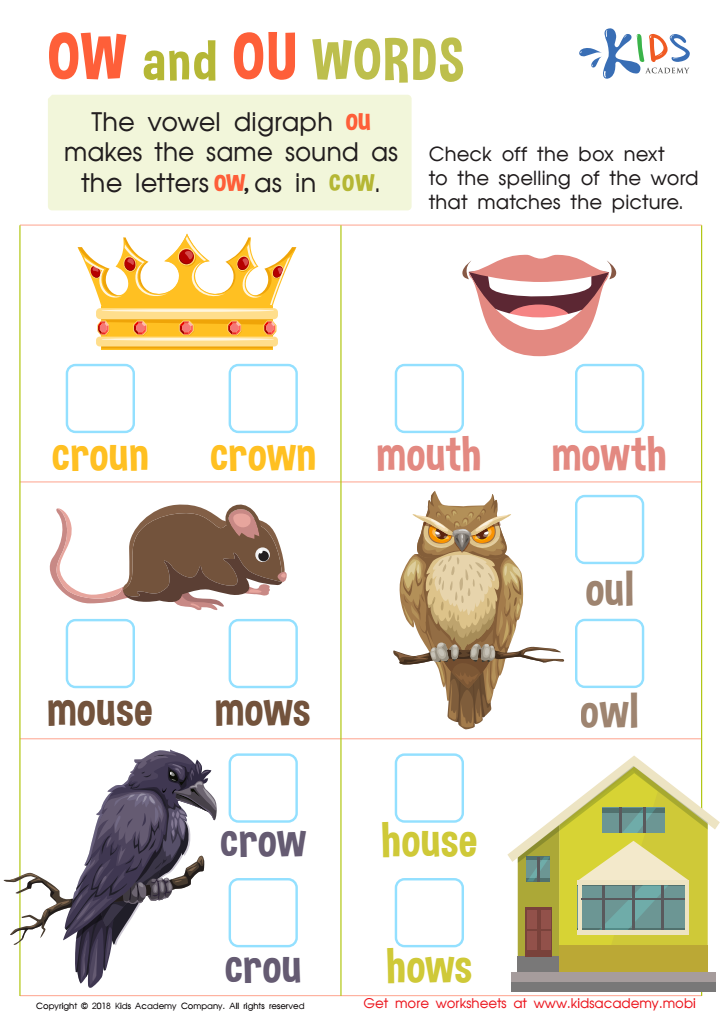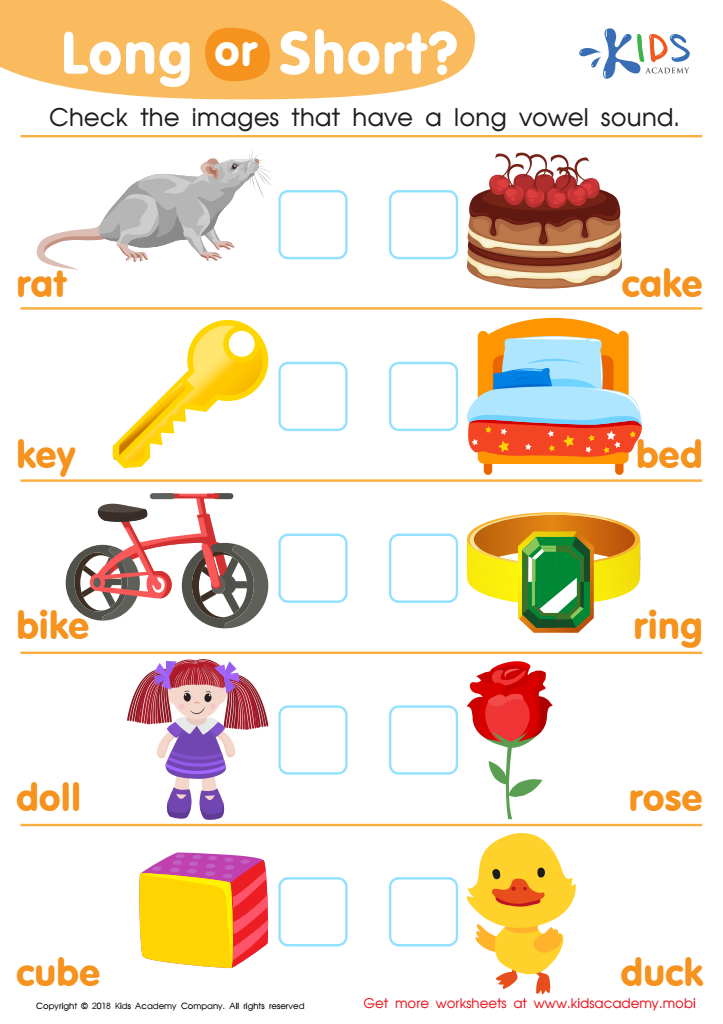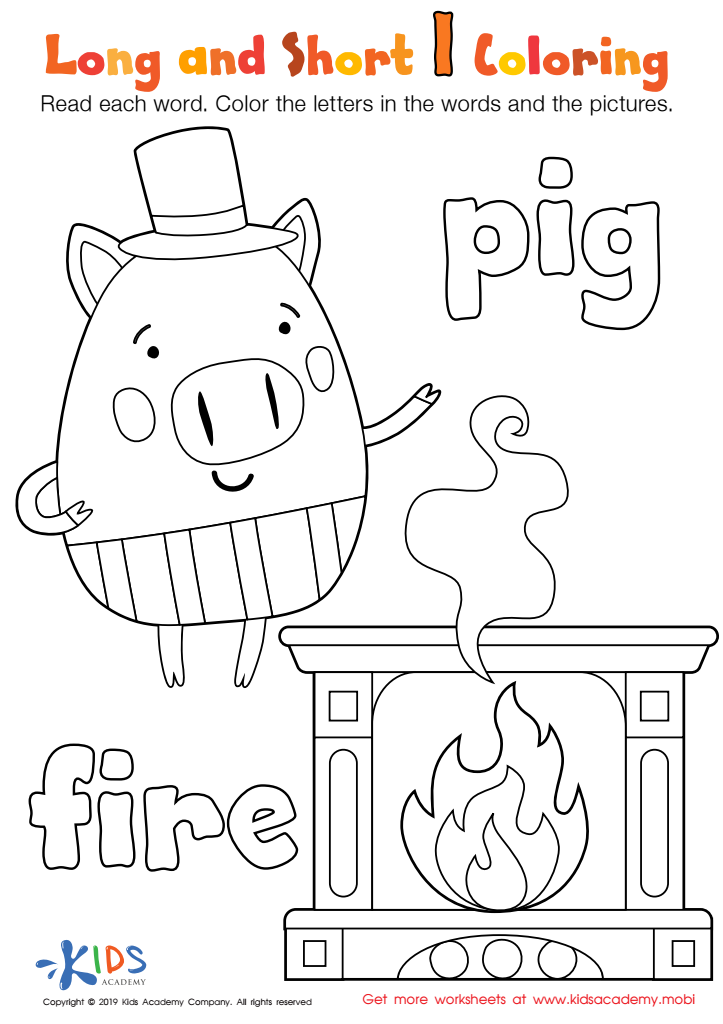Understanding vowel sounds Normal Vowels Worksheets for Ages 6-8
4 filtered results
-
From - To
Unlock the world of vowel sounds with our "Understanding Vowel Sounds Normal Vowels Worksheets" designed for ages 6-8. These engaging worksheets provide young learners with a fun and interactive way to explore the essential building blocks of language. By focusing on normal vowel sounds, children will enhance their phonetic awareness, improve their reading skills, and gain confidence in their writing abilities. With colorful illustrations and age-appropriate activities, our worksheets make learning enjoyable for kids, ensuring they grasp the nuances of vowels in an entertaining manner. Dive into our collection and help your child master vowel sounds today!


Reading: OW and OU Words Worksheet


Long or Short Reading Worksheet


Reading: Long a and Short a Worksheet


Long and Short I Worksheet
Understanding normal vowel sounds is crucial for children aged 6-8, as this stage is foundational for reading and writing proficiency. Vowels, the building blocks of language, significantly influence phonetic awareness, which is essential in bridging the gap between spoken and written language. Mastering normal vowel sounds equips children with the ability to decode words, facilitating reading fluency and comprehension.
When parents and teachers prioritize vowel sound education, they help children develop critical listening and vocal skills, enabling them to recognize word patterns and improve spelling. This understanding also enhances vocabulary acquisition, as children learn that similar vowel sounds can change a word's meaning or function—laying the groundwork for more complex phonics rules in the future.
Additionally, familiarity with vowel sounds boosts confidence in language use, encouraging children to engage more actively in conversations, storytelling, and subsequently, writing. By supporting vowel sound mastery at this formative age, parents and educators can foster a love for reading and learning, preparing children for future academic success. Ultimately, investing time in understanding normal vowel sounds not only enriches academic achievement but also nurtures essential communication skills and cognitive development for lifelong learning.
 Assign to My Students
Assign to My Students











